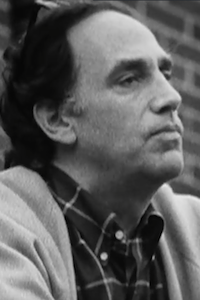Con Man Synopsis
Over a three year period, filmmaker Jesse Moss secured Hogue’s participation in the film and gained access to previously-sealed police records, including Hogue’s fraudulent Princeton application and an audio recording of Hogue’s police interrogation. The film weaves together this new material, candid interviews and revealing scenes with Hogue — who appears on camera for the first time ever — to present an intimate and disturbing profile of the elusive con artist.
Moss’ fascination with Hogue can be traced to 1985, when Hogue, then in his mid-twenties, assumed the identity of a deceased infant named Jay Mitchell Huntsman and enrolled in the filmmaker’s high school in Palo Alto, California. Hogue claimed to be a sixteen-year orphan from Nevada farming commune, but his true identity was soon revealed.
Five years after Hogue fled Palo Alto, the Princeton University community was stunned to learn that Alexi Indris Santana, a popular Princeton sophomore was actually serial imposter James Arthur Hogue — a thirty-one year-old drifter with a long criminal record and a pathological compulsion to re-invent himself.
Remarkably, Hogue had fooled Princeton for two years. He told admissions officers and classmates that he was an eighteen year-old self-educated orphan who had grown up herding sheep in the canyons of Southern Utah. While at Princeton, Hogue — posing as Alexi Santana — competed for the University track team, excelled academically, and was admitted to the Ivy Club, the campus’ most prestigious private eating club.
But Hogue had left a trail of angry victims across America, and his past finally caught up with him at an Ivy League track meet. Tripped up by a bizarre, coincidental encounter with a young woman he had conned years earlier at Palo Alto High School, Hogue watched his elaborately constructed false life at Princeton collapse around him. Hogue was arrested on campus, charged with defrauding the University, and later sent to prison for his crimes. After his release from prison in 1997, he disappeared.
Hogue’s exploits evoke a great literary tradition of hardscrabble, boot-strap heroes and social climbing confidence men. His life at Princeton might have been drawn directly from an F. Scott Fitzgerald novel, part Great Gatsby, part This Side of Paradise.
Yet, throughout his life, Hogue refused to speak publicly about his deceptions or explain his motivations. Did simple regret — a feeling that he had squandered past opportunities — drive Hogue to abandon his old life? Was his compulsion rooted in a deep-seated insecurity about social class and education — rewards that he felt had been unjustly denied to him? Or, was Hogue motivated by some darker, sociopathic desire to manipulate and deceive people?
In order to unravel these mysteries, CON MAN begins with Hogue’s arrest on the Princeton campus, and then traces the arc of his life backwards, to the wealthy towns where he perpetrated similar cons, the small western cities where Hogue cooked up his stories, and finally, to the humble streets of Kansas City, where Hogue grew up.
The story of Hogue’s life emerges through the intimate accounts of those who knew him in his many guises. Through these recollections and anecdotes — provided by friends, classmates, coaches, lawyers, and others — the film presents a vivid, multi-faceted portrait of Hogue: his tangled criminal record, his brilliant athletic gifts, his noble educational aspirations, and his desire to remake himself in the image of the American establishment. Many of those interviewed in the film are speaking publicly about Hogue for the first time.
Through the first two acts of the film, Hogue remains a spectral and mysterious presence, defying easy psychological categorization. As strongly as his story unfolds, a simple “why” proves elusive.
The final act of the film — triggered by the filmmaker’s desire to finally find and confront Hogue — satisfies our hunger to meet the notorious imposter in person. Encounters with Hogue at his remote ranch in Southern Colorado and on the Princeton campus both elevate and deepen the mystery of his life and suggest that he may, again, re-invent himself.




















